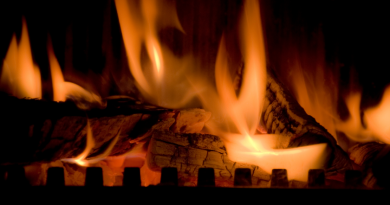Holiday storm sees record high winds in Canadian Arctic communities

Communities in the Qikiqtani region of Canada’s Arctic territory of Nunavut are recovering from a storm over the holiday long weekend that saw record high winds in both Pangnirtung and Kimmirut, according to Environment and Climate Change Canada.
In Kimmirut, wind gusts reached 120 km/h on Dec. 26, and in Pangnirtung, winds were clocked at 136 km/h. That’s the highest on record for data that goes back to 1925, Environment Canada meteorologist Sara Hoffman said.
Though, one resident posted a photo on social media showing a gust at 184 km/h.
In Pangnirtung, the storm saw housing units damaged and shacks and boats blown away. One apartment lost its staircase.
The weather also meant it wasn’t safe for hamlet staff to plow snow or deliver water. Workers couldn’t even open the doors of their vehicles.
“I saw that the wind picked up to 184 km/h according to the weather device. It was getting scary,” said Tim Evic, the foreman of municipal services in Pangnirtung.

Some people took shelter in the community school, he said.
In Coral Harbour, winds were as high as 115 km/h, and in Grise Fiord, 107 km/h.
“It speaks to the strength and size of this storm that days after it started we still have blizzard warnings and wind warnings out,” Hoffman said last week.
The storm also saw two new daily temperature highs in Pangnirtung of 4 C on Dec. 27 and 1.4 C on Dec. 28. The unusually warm temperatures are caused by wind coming down from high in the atmosphere, Hoffman said.
Storms in the region usually happen in the spring and fall, so it’s uncommon for a storm of this size to come in late December, she said, adding that the storm itself started in Hudson Bay when a low pressure system came up from Quebec.
The storm “deepened over the water,” she said.
“There’s quite a lot of ice now but even though, the ice energy can come through from the water below so it strengthened and intensified and brought very strong winds and long periods of blowing snow and heavy falling snow,” Hoffman said.
Related stories from around the North:
Canada: 2020 shaping up to be among warmest years on record says WMO, Eye on the Arctic
Greenland: Rise in sea level from ice melt in Greenland and Antarctica match worst-case scenario: study, CBC News
Russia: Record-breaking heat followed by extreme cold on Russian Arctic coast, The Independent Barents Observer
Sweden: Reducing emissions could create up to 3,000 new jobs in Arctic Sweden says mining group, Eye on the Arctic
United States: November ranks 2nd hottest on record for the Arctic and globe, Radio Canada International



